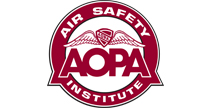Seven die in six-seat Baron accident
(NYC02FA178)
 By David Kenny
By David Kenny
How much margin is enough? When should a mechanical problem prompt a change in plans, even if it doesn’t ground the aircraft? And how far down the list of unlikely events do you need to go when making that decision?
The crash of a pressurized Beech Baron shortly after departure from Keene, N.H. on Sept. 2, 2002, killed all seven on board. (Yes, seven in a six-seat aircraft.) The pilot had filed an IFR flight plan from the Dillant-Hopkins Airport in Keene to Yeager Airport in Charleston, W.Va. When the flight service briefer questioned the number on board, the pilot replied, “Well, we’ve got some kids with us today.” The pilot also mentioned that he planned to fly all the way back to Louisiana with the gear down due to a mechanical failure that prevented it from retracting.
Family members recalled that he had mentioned a gear problem on the flight up on Aug. 30, but had been unable to find a mechanic over the weekend. On Sept. 2, he put in about 110 gallons of self-service fuel, stowed five or six duffle bags in the nose baggage compartment, and loaded six passengers. The manager of the FBO said that the run-up and the takeoff from Runway 20 appeared normal, but witnesses further south reported that the airplane’s engines were “sputtering and backfiring” as it passed less than 300 feet overhead. The airplane began a left turn, as if turning back to the airport, before descending out of sight.
Related Links
Aging Aircraft online course
Engine and Propeller online course
“Power Loss on Takeoff” Real Pilot Story
Do the Right Thing online course
Emergency Procedures Safety Advisor
The wreckage was strewn through a grove of 80-foot trees on a 360-degree heading. The left outer wing was about 175 feet from the fuselage, which was consumed by fire. One of the right engine’s cylinder heads was fractured. Metallurgic analysis determined that it was a fatigue fracture that originated in the attachment threads rather than impact damage. The right engine’s throttle was closed, but the propeller wasn’t feathered.
The NTSB’s finding of probable cause listed the cylinder failure only as a contributing factor, instead focusing on “the pilot’s improper preflight planning, and his decision to depart with known mechanical deficiencies to the landing gear system ….” The report and also cited “the pilot’s inability to retract the landing gear, and his failure to feather the propeller of the affected engine.”
The pilot had alternatives. At least 14 airports within 50 nautical miles of Dillant-Hopkins have runways longer than 3,500 feet, including Class C Manchester Airport and four Class D fields. A few phone calls the morning of the accident might have located a Baron mechanic nearby. Getting the passengers onto airline flights, or putting them in a hotel until the gear was fixed, would have added to his inconvenience and expense—but the decision to take them cross-country in a mechanically compromised airplane relied too heavily on the assumption that nothing else would go wrong.
It did, and at the worst possible moment. Much of multi-engine training is spent learning to deal with the loss of one engine, but failures on takeoff aren’t usually practiced below 400 feet agl due to the risk. Single-engine climb performance is sluggish at best, and worse with the gear down. Extra weight doesn’t help. Had the pilot decided to fly solo, with no baggage and minimal fuel, to the nearest field where repairs could be made, he still might not have been able to maintain altitude when the cylinder failed. But he would have been higher thanks to the better rate of climb, giving him more time to secure the engine and feather the prop. His chances would have been better. And six others would still be alive.
Ferrying a damaged airplane is always a calculated risk. Shielding passengers from that risk also maximizes aircraft performance. It shouldn’t be a difficult decision.